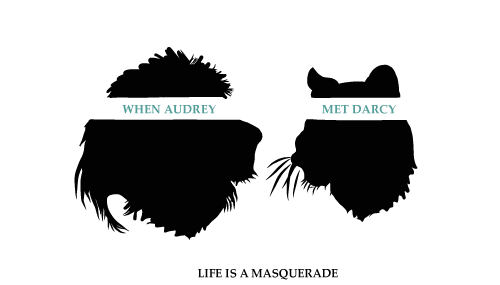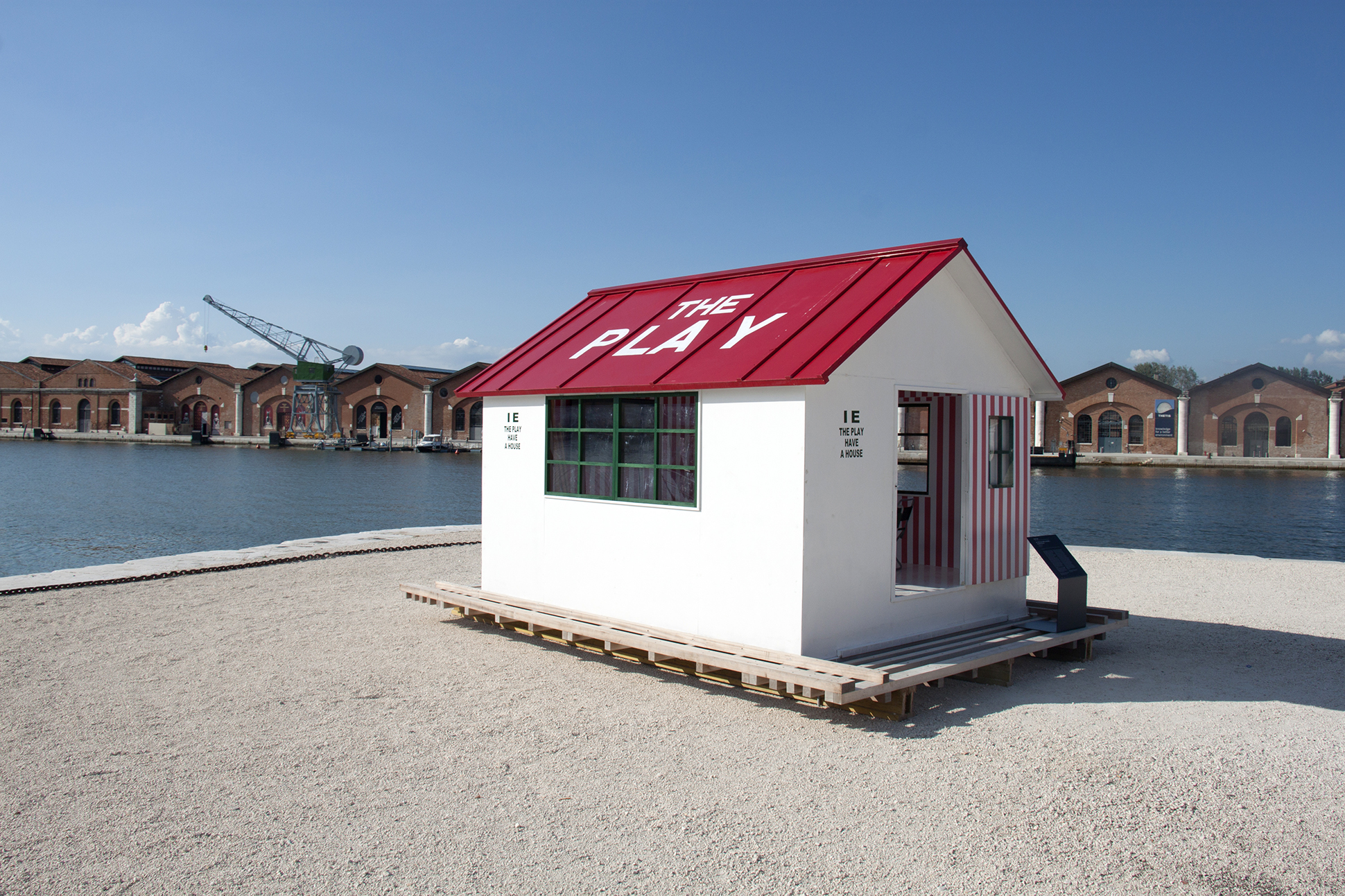In a world where the concept of what defines us as humans is lost among conflict, art is most needed. In the 57th International Art Exhibition of Venice (La Biennale Arte 2017) ART (in capital letters) is treated as the ultimate path to freedom, self-expression, question and debate. This years exhibition is designed ‘with artists, by artists and for artists‘, quoting Christine Macel, the curator. This journey through their ideas and imagination, their concerns and doubts, their life and practice is structured in nine chapters or pavilions, two in the Central Pavilion (Giardini) and seven across the Arsenale.
Although we should start with the two introductory ones (the Pavilion of Artists and Books and the Pavilion of Joys and Fears, that will be presented in Part II), we have an special predilection for the Arsenale. In this old navy yard of unique beauty, and through the Giardino delle Vergini, we find the Pavilion of the Common, the Pavilion of the Earth, the Pavilion of Traditions, the Pavilion of Shamans, the Dionysian Pavilion, the Pavilion of Colors and the Pavilion of Time and Infinity. Borders between pavilions are blurred, so artists views are merged and somehow flow together like a river course, with all its detours, tributaries and complexities. The visitor experiences all this immensity of points of view, art expresses humanism in its purest version, as common space for reflexion, discussion and understanding.
Be our guest and discover the lively voice of artists
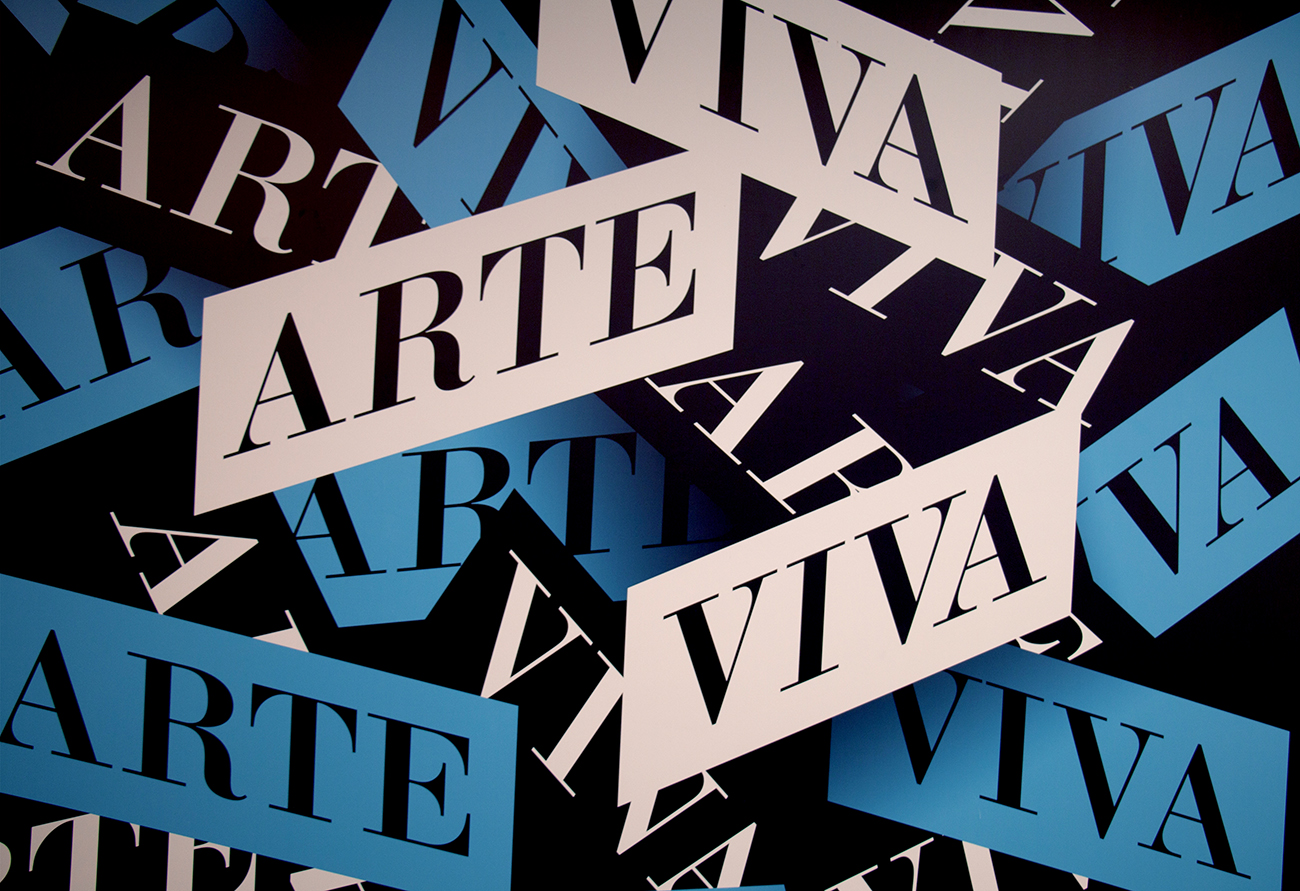
III. Pavilion of the Common
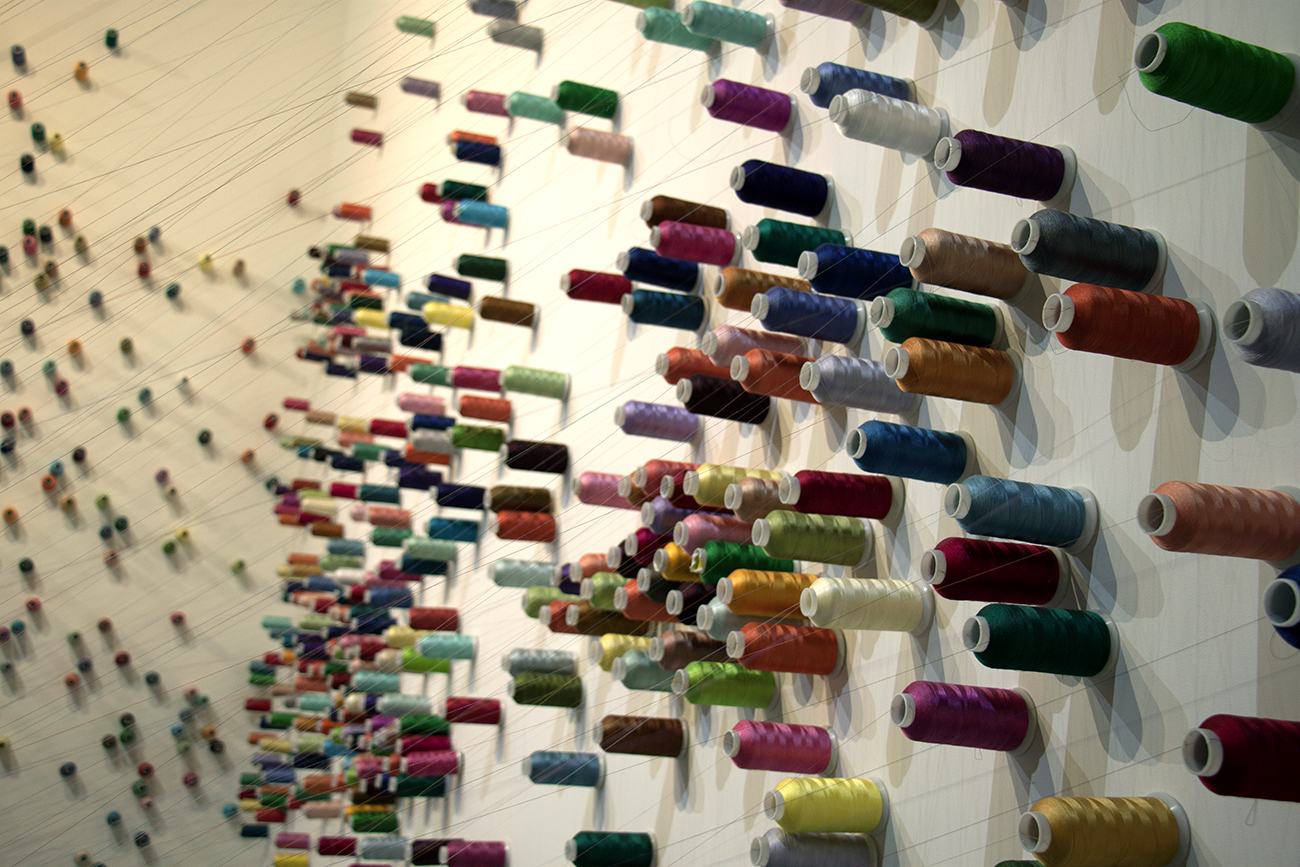
Lee Mingwei – The Mending Project (2009-2017)
Lee Mingwei’s interactive installation deals with transforming old clothes into a bond between the artist and his/her public. The somehow mundane act of mending worn out clothes with colorful threads triggers and emotive memory in both artist and public. Sharing this moment reinforces links between human beings and this installation materializes this connection.
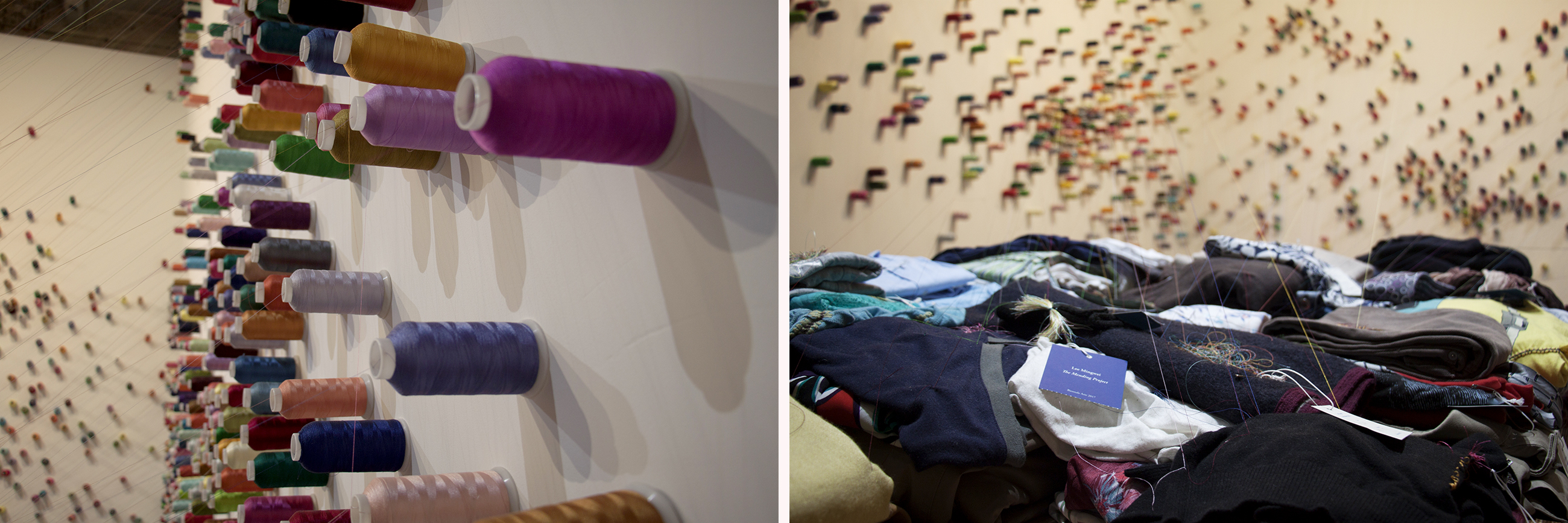
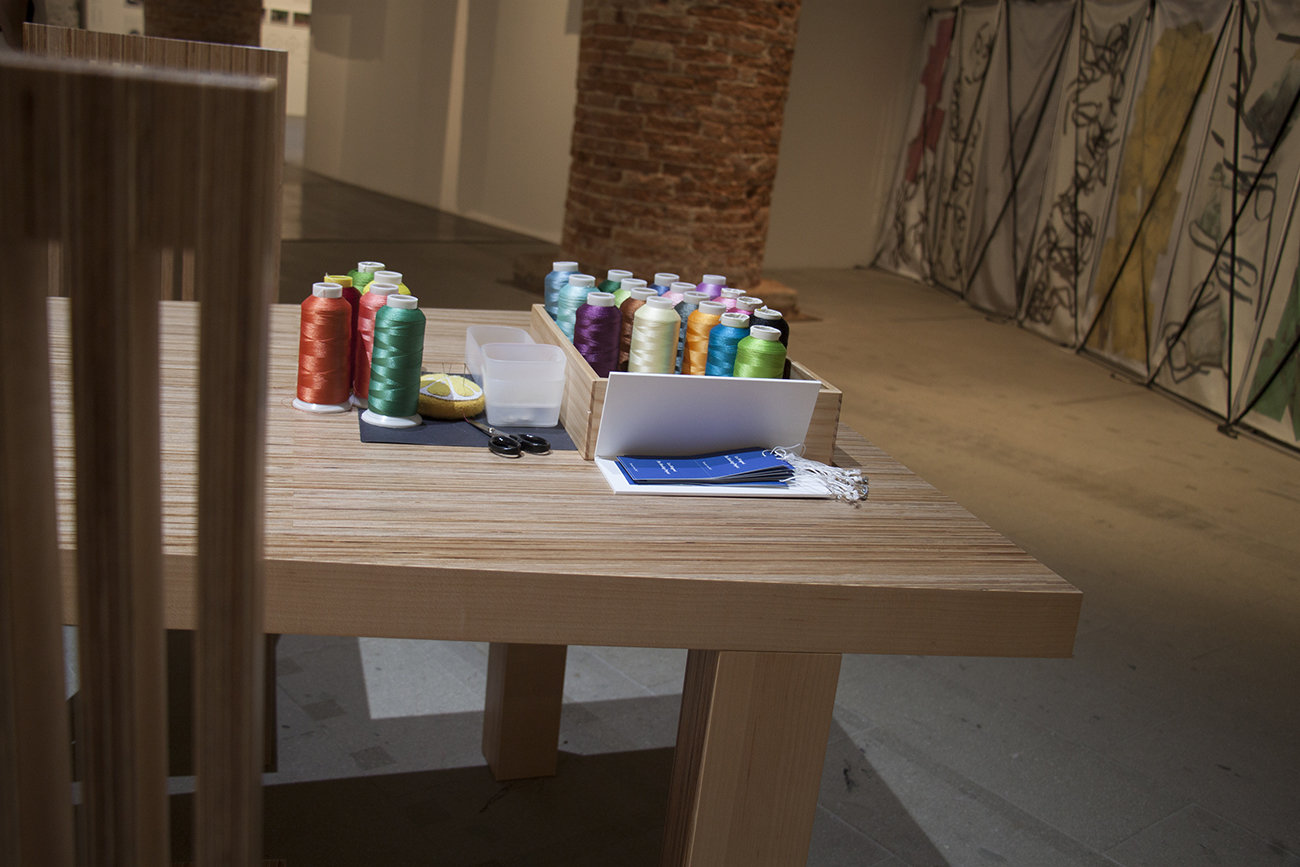
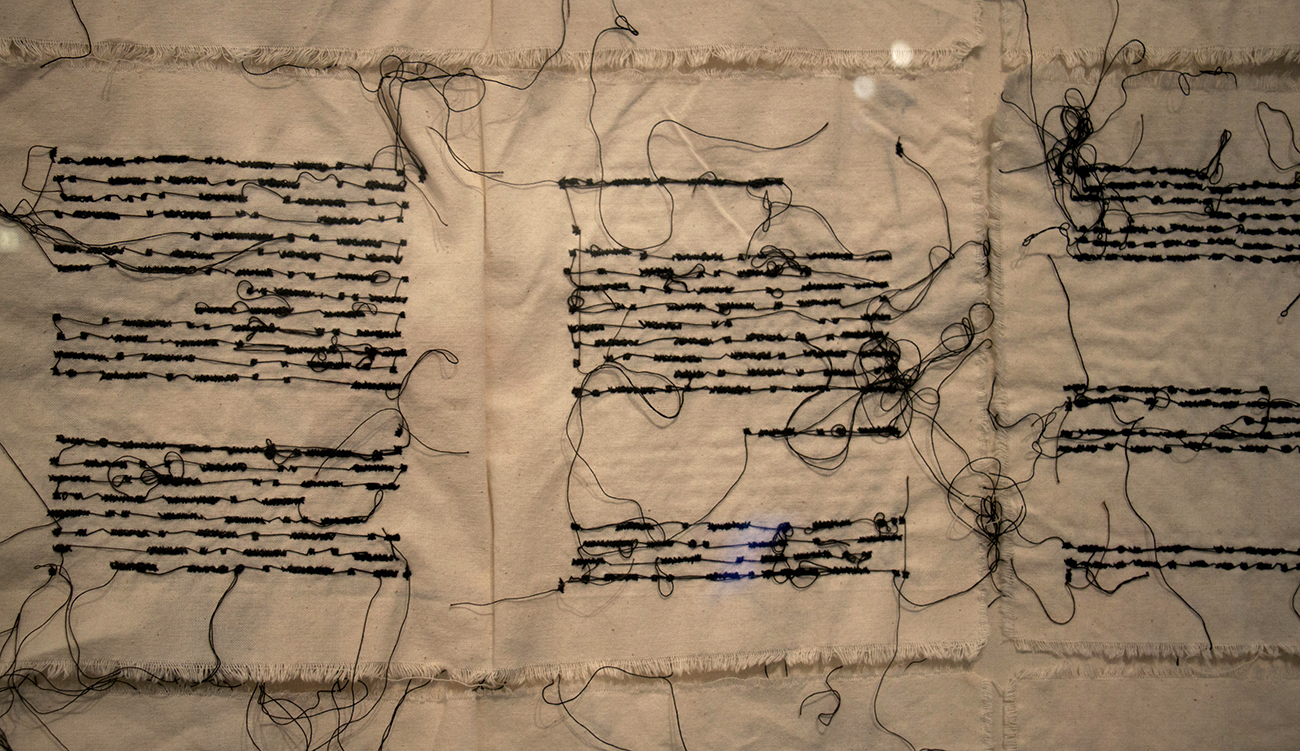
Maria Lai – Lenzuolo (1991)
In this fabric collage, the sewing machine replaces the pen and the color of the thread objectifies the ink.
IV. Pavilion of the Earth

Details of Acqua Alta (2017) by Michel Blazy (left) and Janas Code (2016-2017) by Michele Ciacciofera (right – from the Pavilion of Traditions-V).
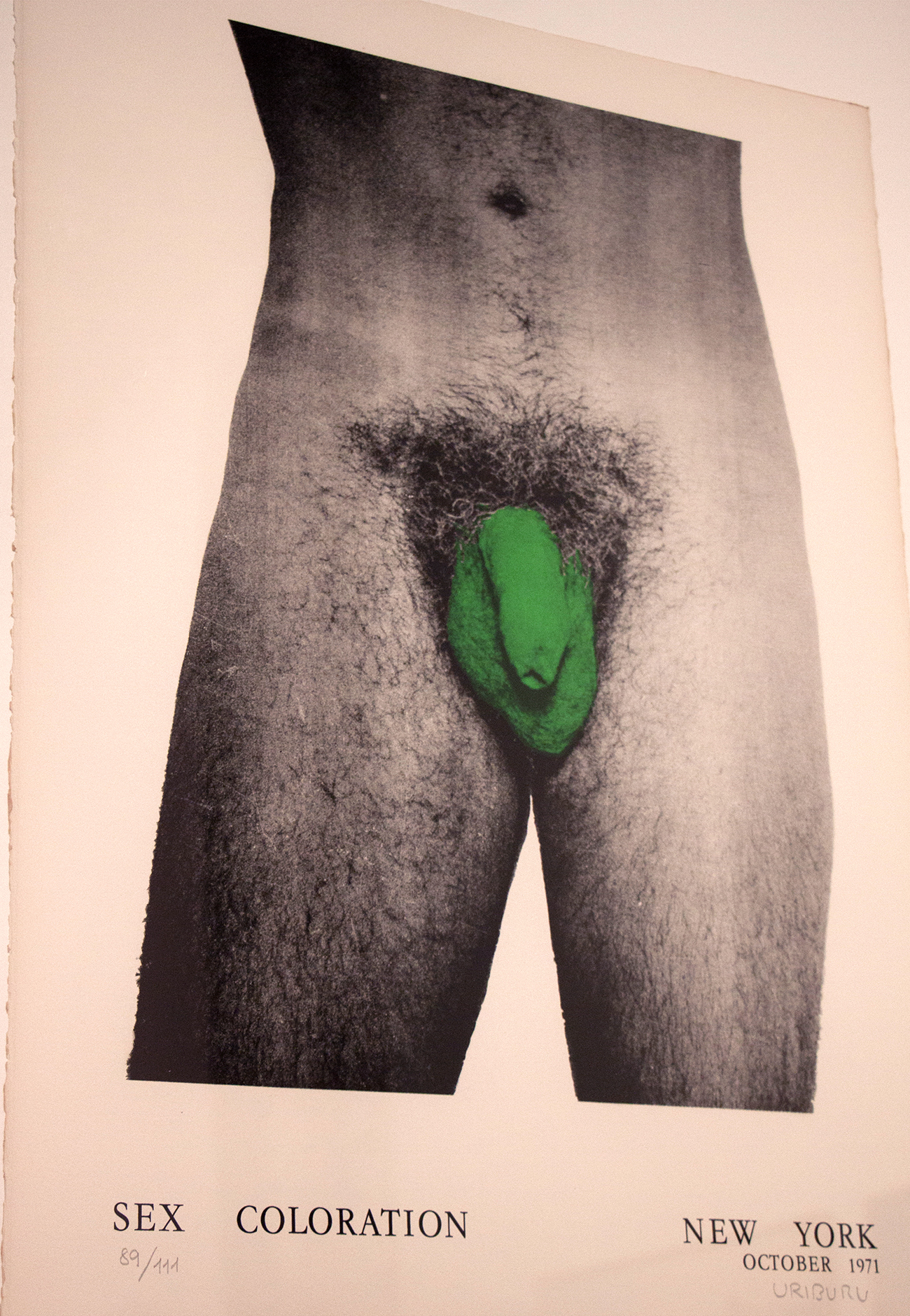
Nicolás García Uriburu – Sex Coloration (1971)
Nicolás art shows his great commitment with environmental issues. As a matter of fact, one of his most remarkable projects consisted of coloring in green (using fluorescein) within the space of few months the East River (New York), the Seine (Paris), the canals of Venice and the Río de la Plata (Buenos Aires) to demonstrate his faith in a possible revolution.
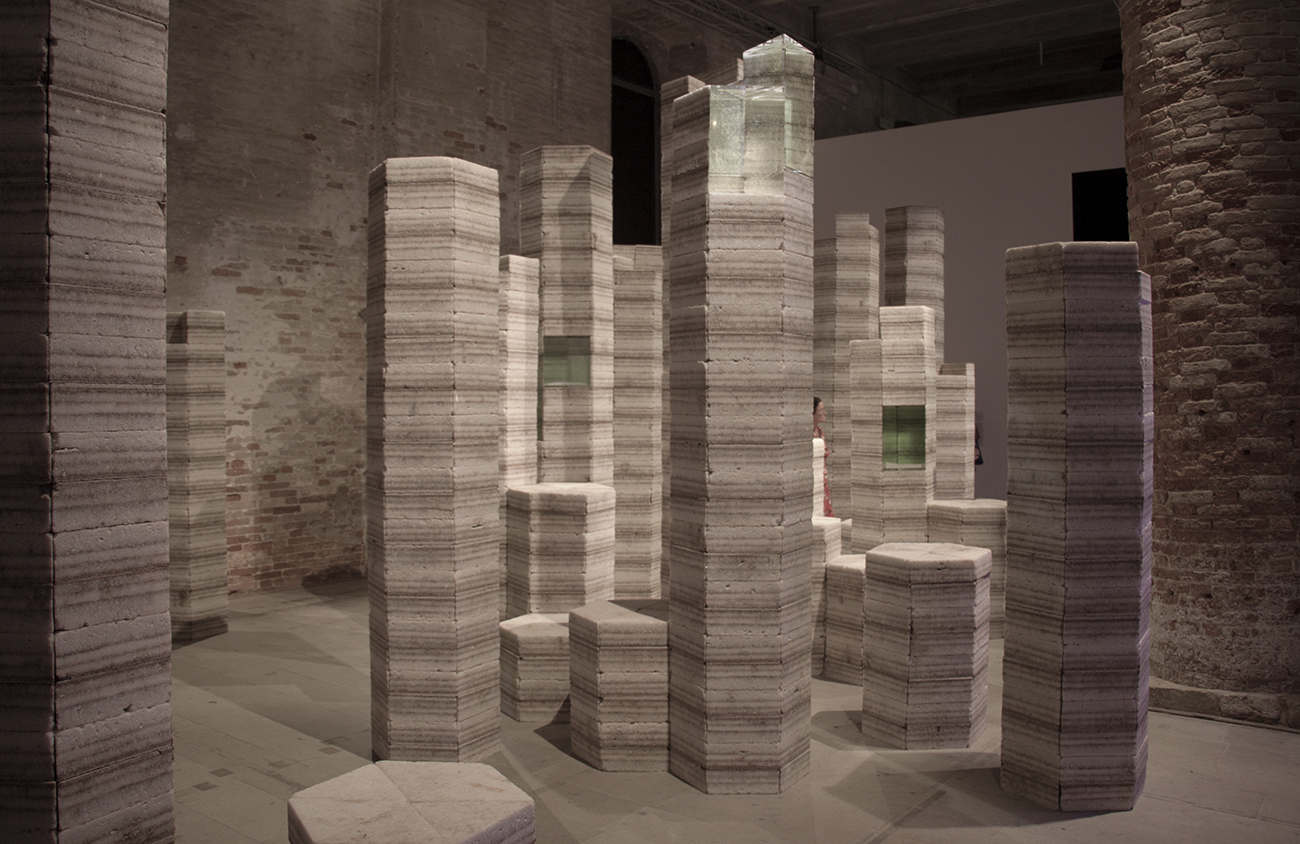
Julian Charrière – Future Fossil Spaces (2017)
V. Pavilion of Traditions
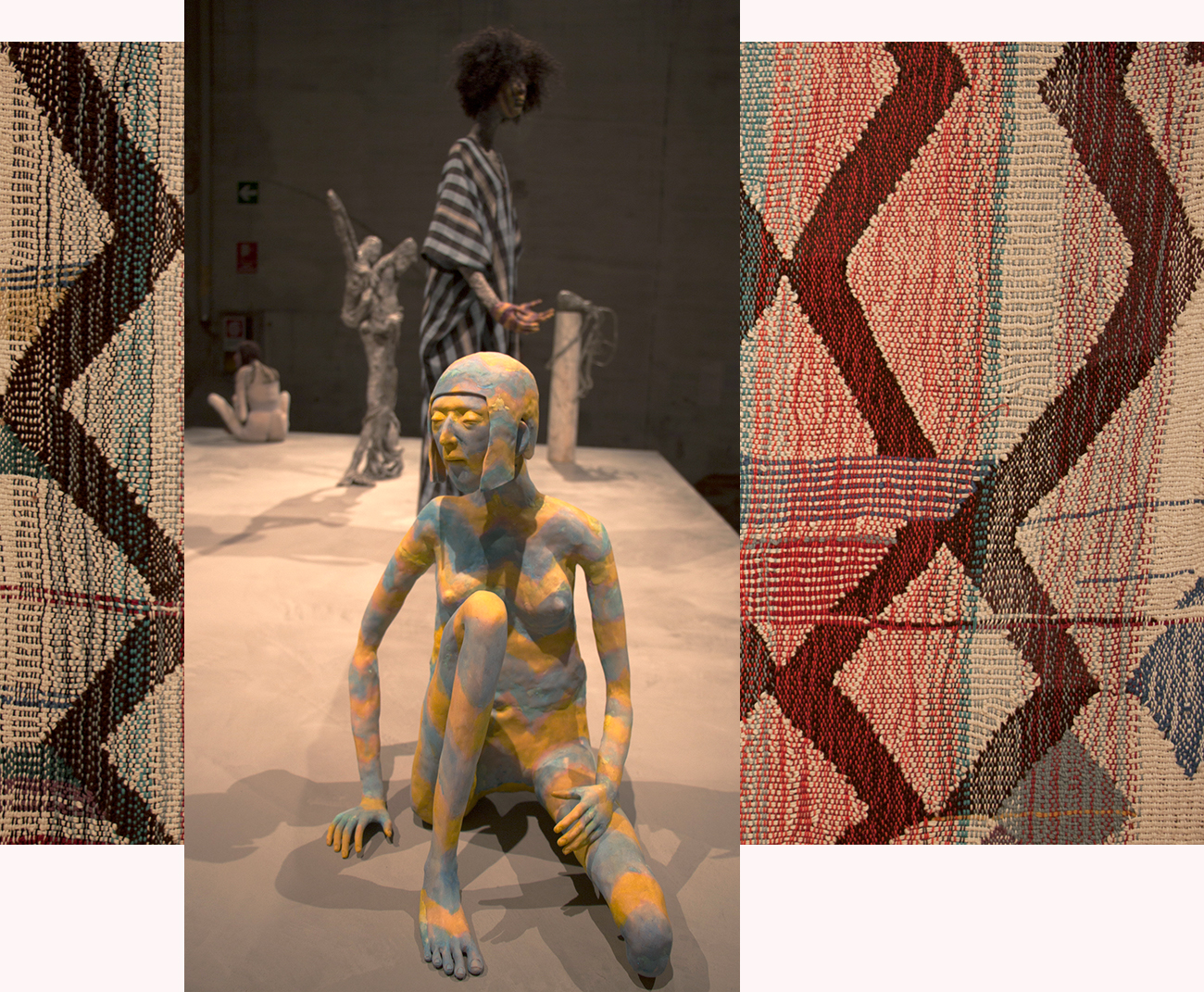
Marianne (2016) by Francis Upritchard over a carpet by Teresa Lanceta
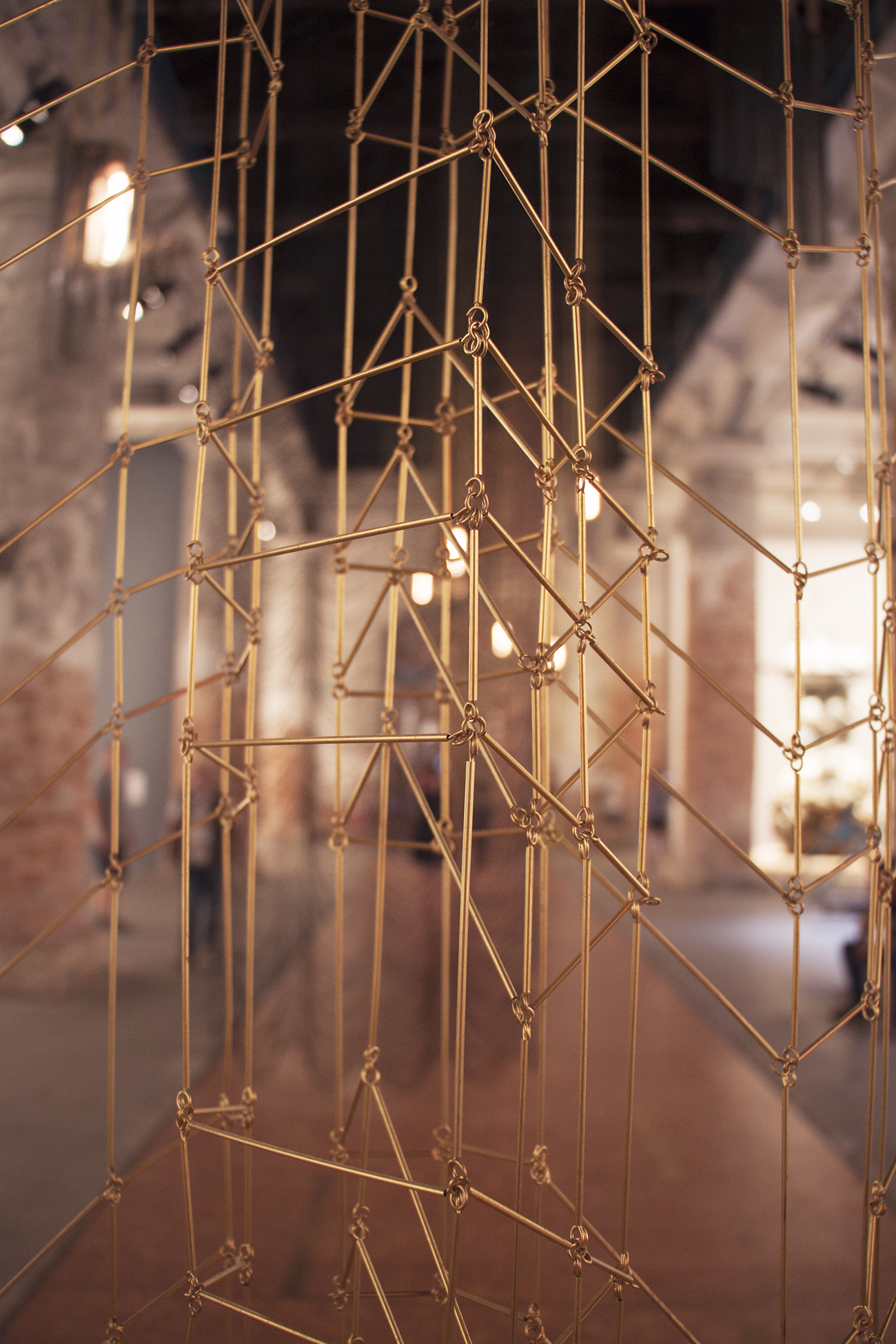
Installation by Leonor Antunes
VI. Pavilion of Shamans
In this next chapter the ‘shamanic’ and ‘visionary’ figure of the artist is subscribed; as Duchamp would say: ‘missionaries’, those stirred by an internal vision. The inmaterial perspective of art provides a channel to express the divine.
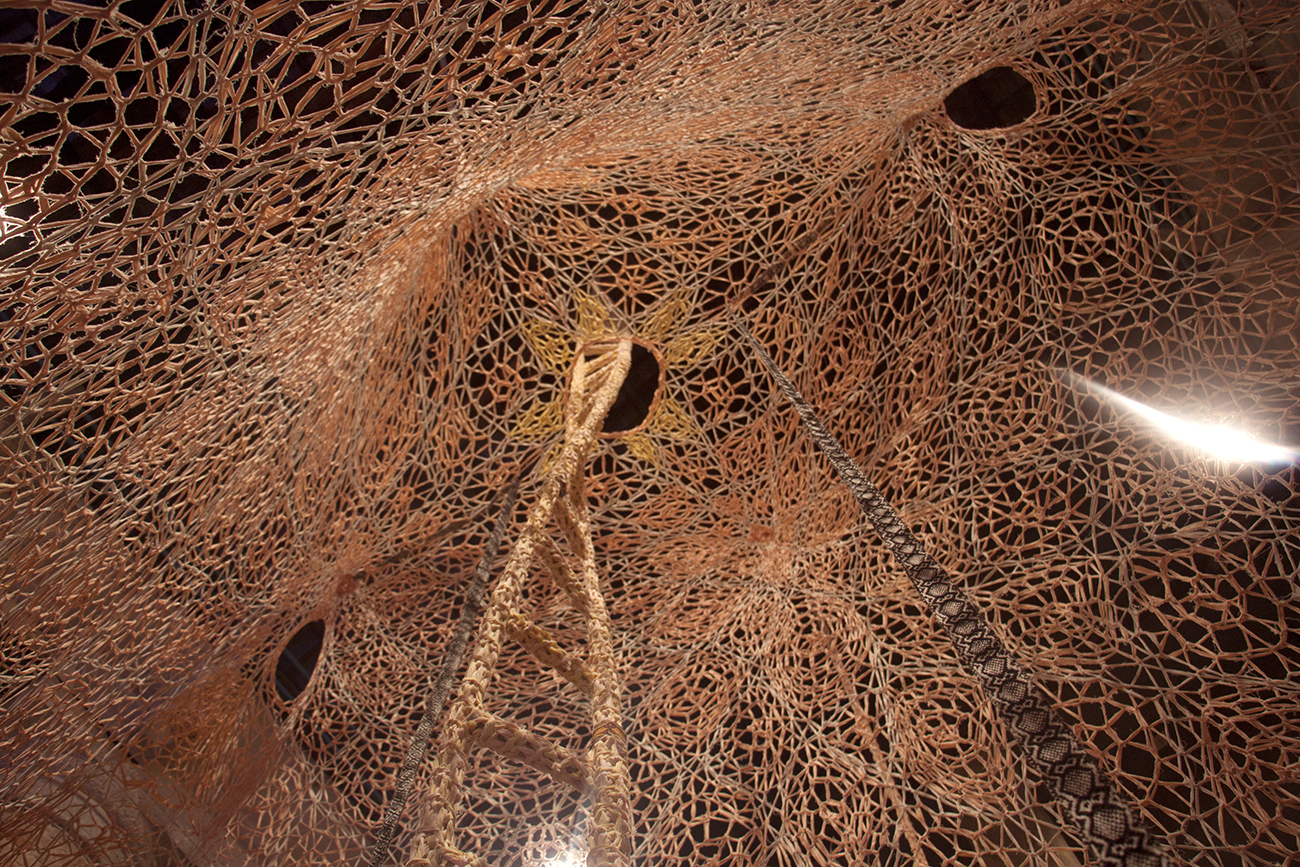
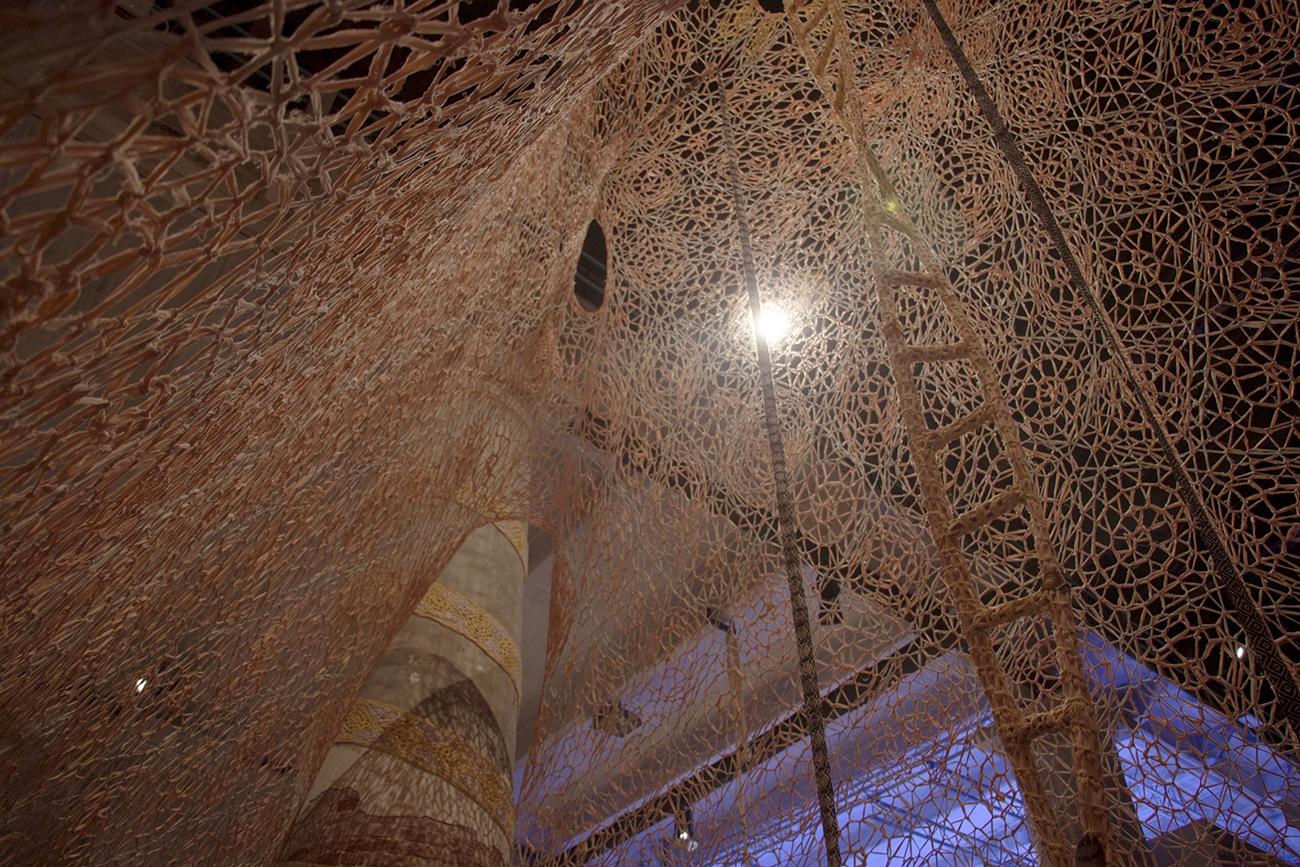
Ernesto Neto – Um sagrado lugar (A sacred place) 2017
In the main corredor of the Arsenale you encounter a ‘Cupixawa’, a place of sociability, political meetings and spiritual ceremonies for the Huni Kuin Indians of the state of Acre in the Amazonian forest. This great polyamide construction provides the perfect emplacement for visitors to be conscious of their connections with nature and to thrust away any bad energies.
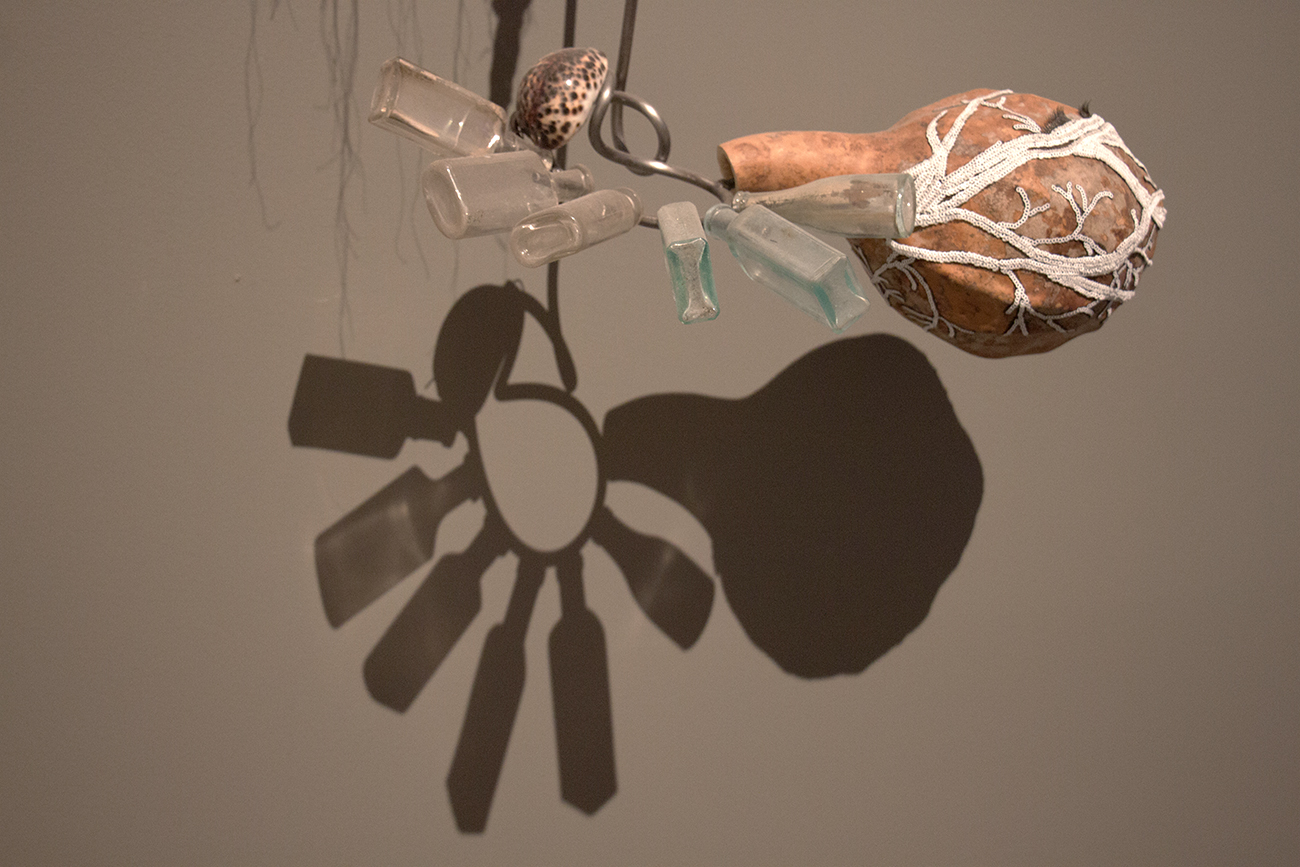
Rina Banerjee – When signs of origin fade, fall out, if washed away, trickle into separations, precipitate when boiled or filtered to reveal all doubleness as wickedness. Vanishing act of migration, mixation like mothers ho hid paternity who could name move me slowly to reveal me only when my maker stands straight (2017) / Detail (up) and full (down left)
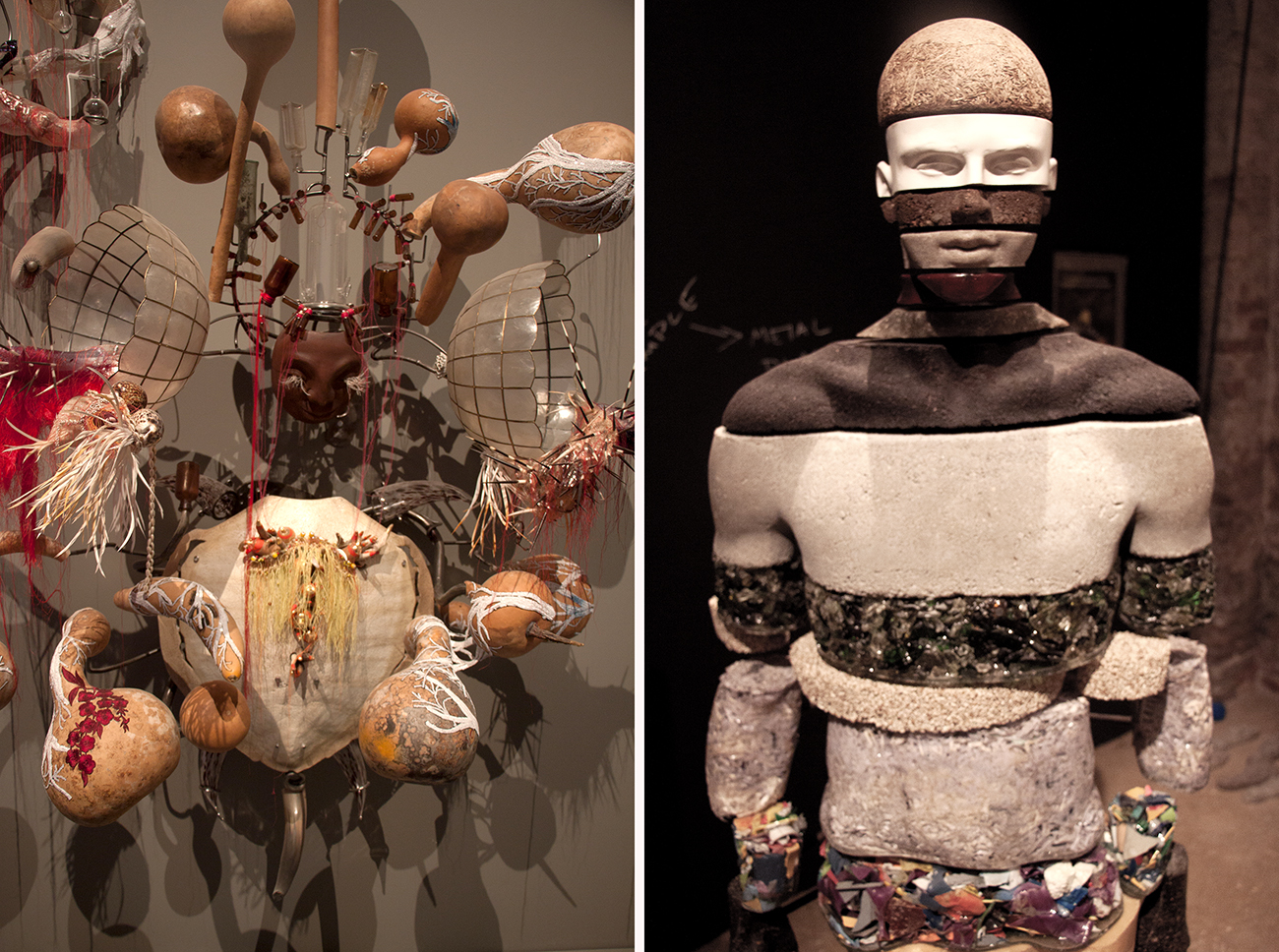
VIII. Dionysian Pavilion
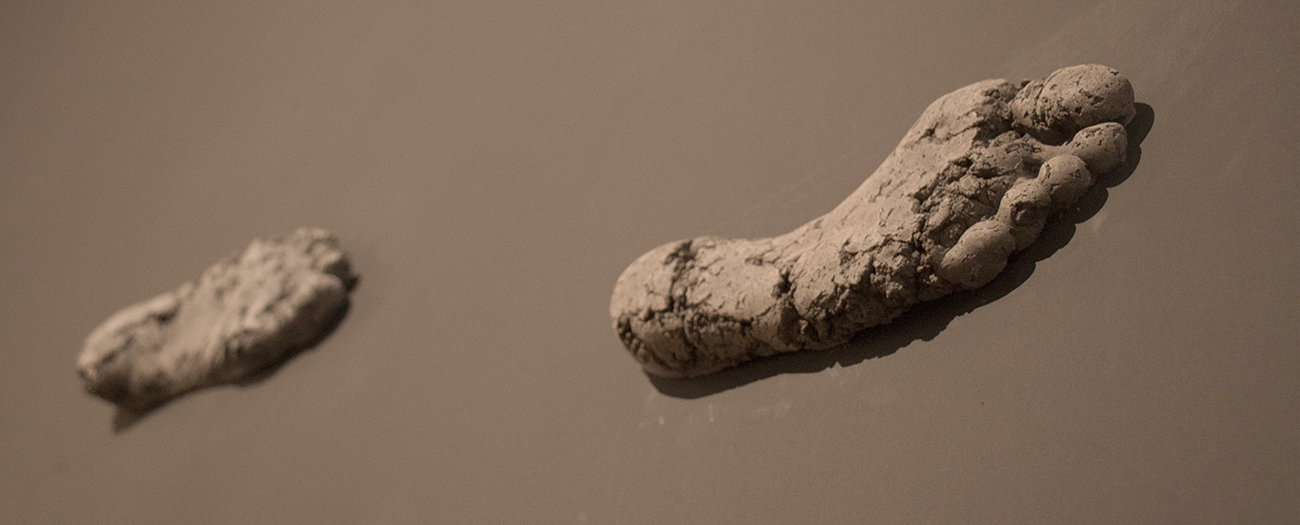
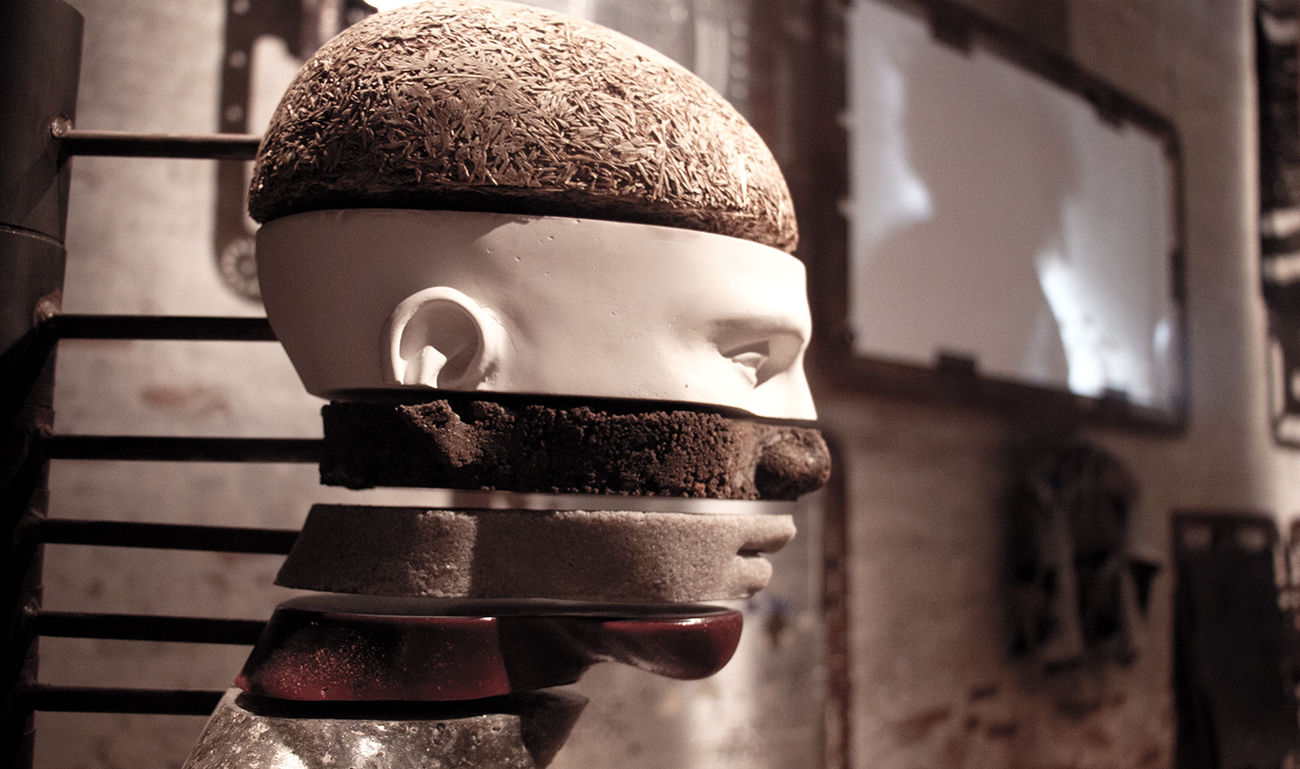
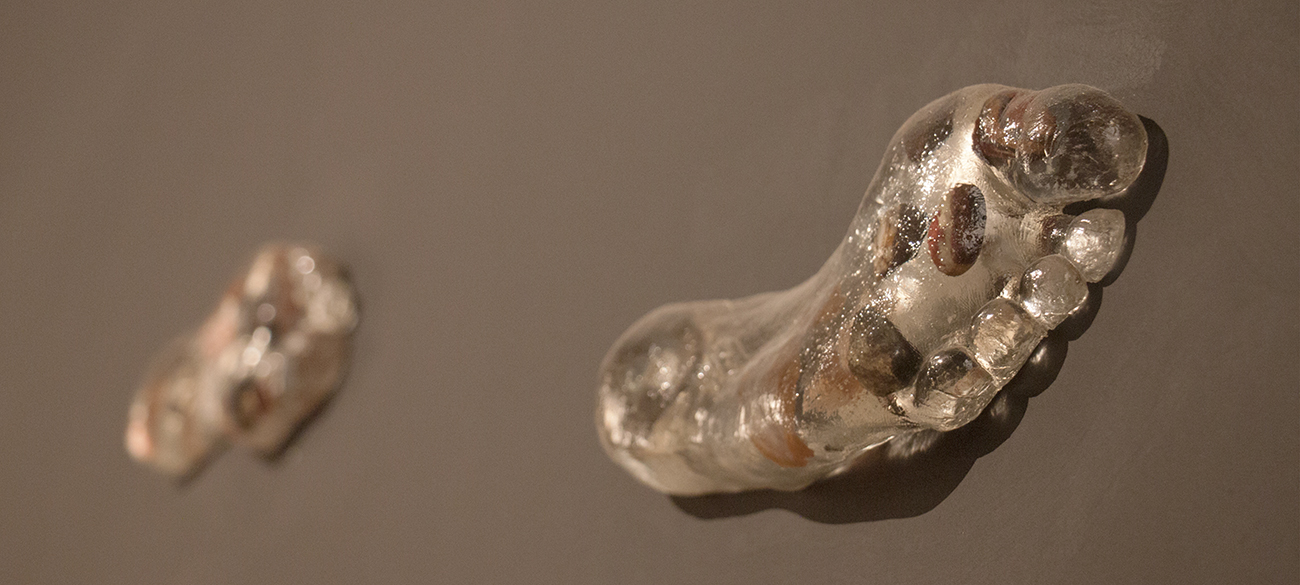
Mariechen Danz – Knot in Arrow: Ore Oral Orientation (2017)
Details of the performatic installation
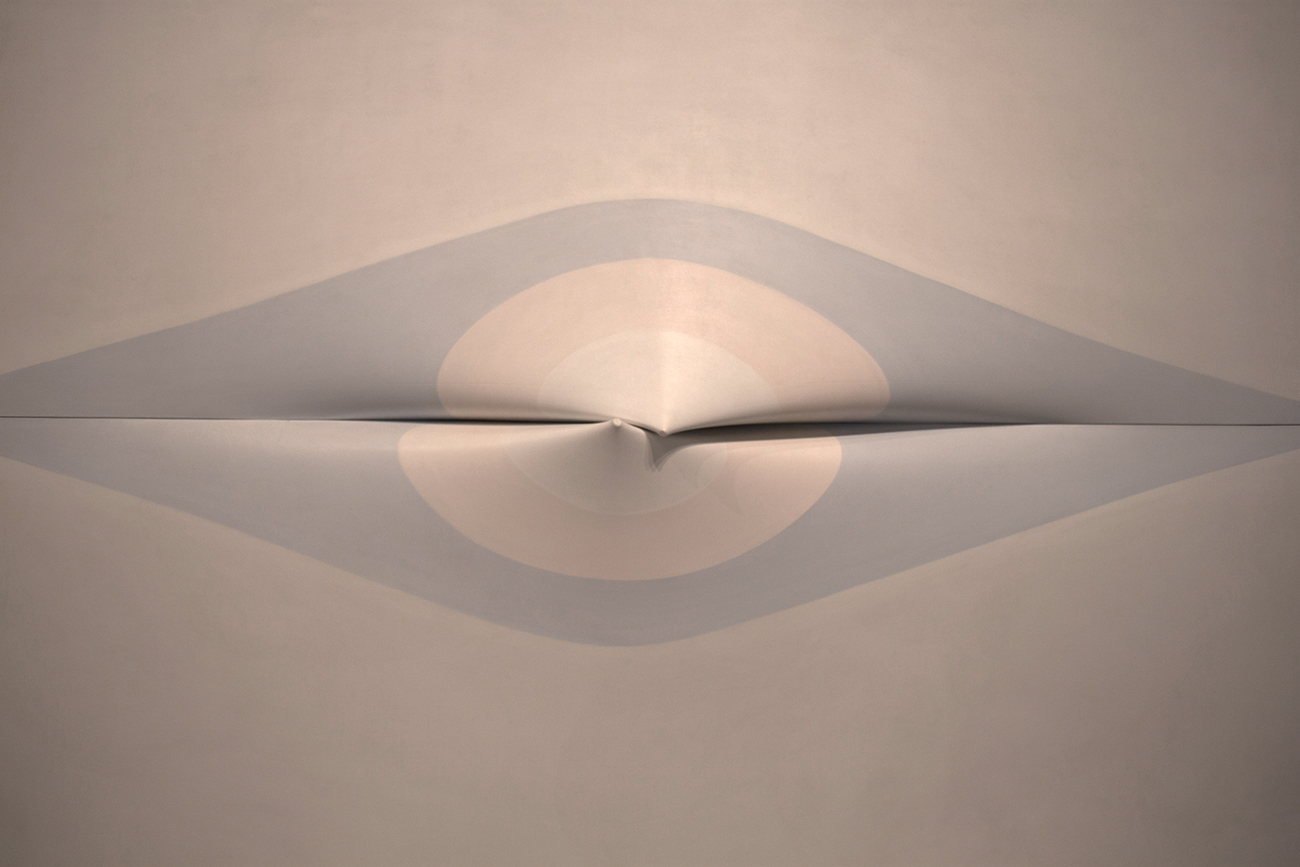
Zilia Sánchez – Eros (1976-1998)
VIII. Pavilion of Colors
This pavilion is an explosion of our visual senses, an ‘out-of-self’ experience prior to the final chapter. The experience of colors is subjective and emotional, a balance between finesse and transparency, light and spirituality; a results of our past, present and future influencing our perception.
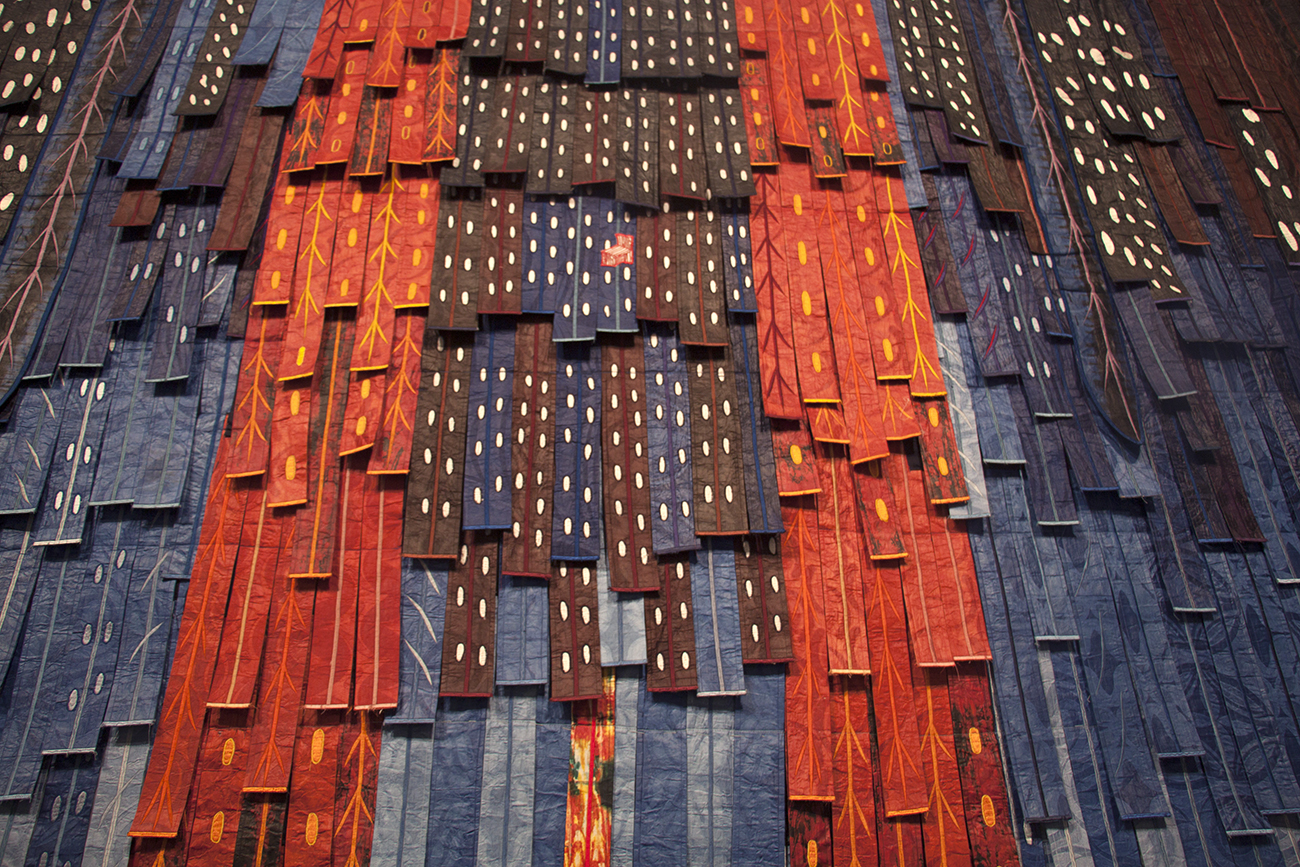
Abdoulaye Konaté – Brésil (Guarani) 2015
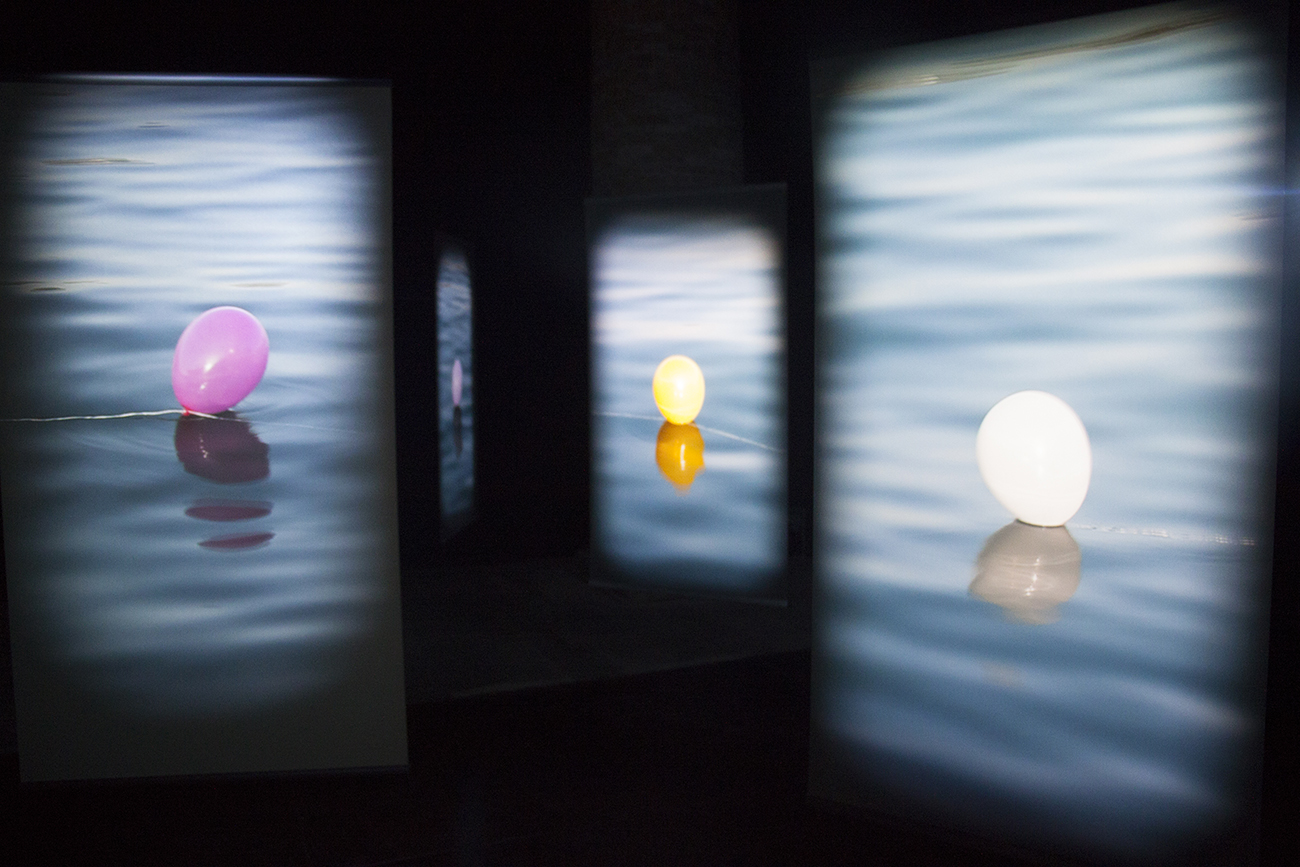
Hale Tenger – Balloons on the Sea (2011)
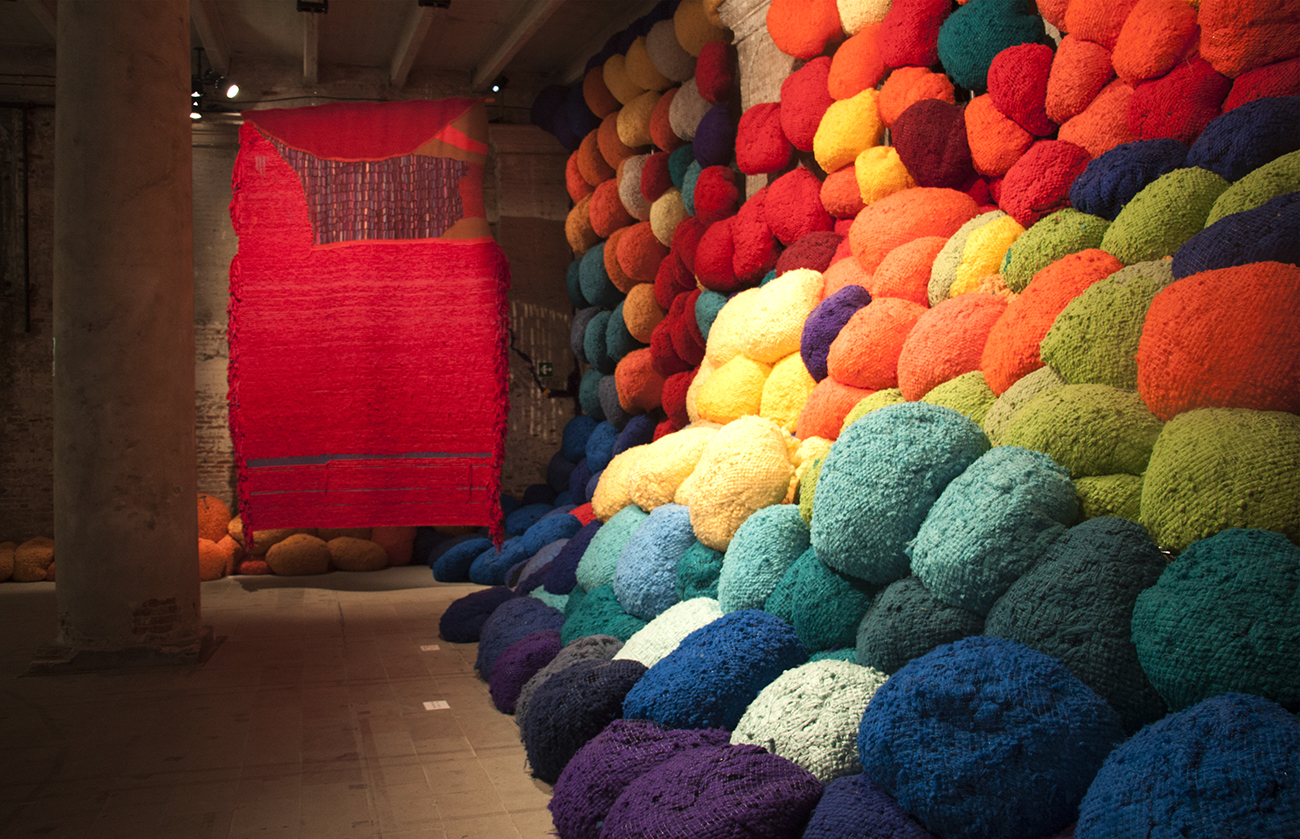
Sheila Hicks – Escalade Beyond Chromatic Land (2016-2017)
IX. Pavilion of the Time and Infinity
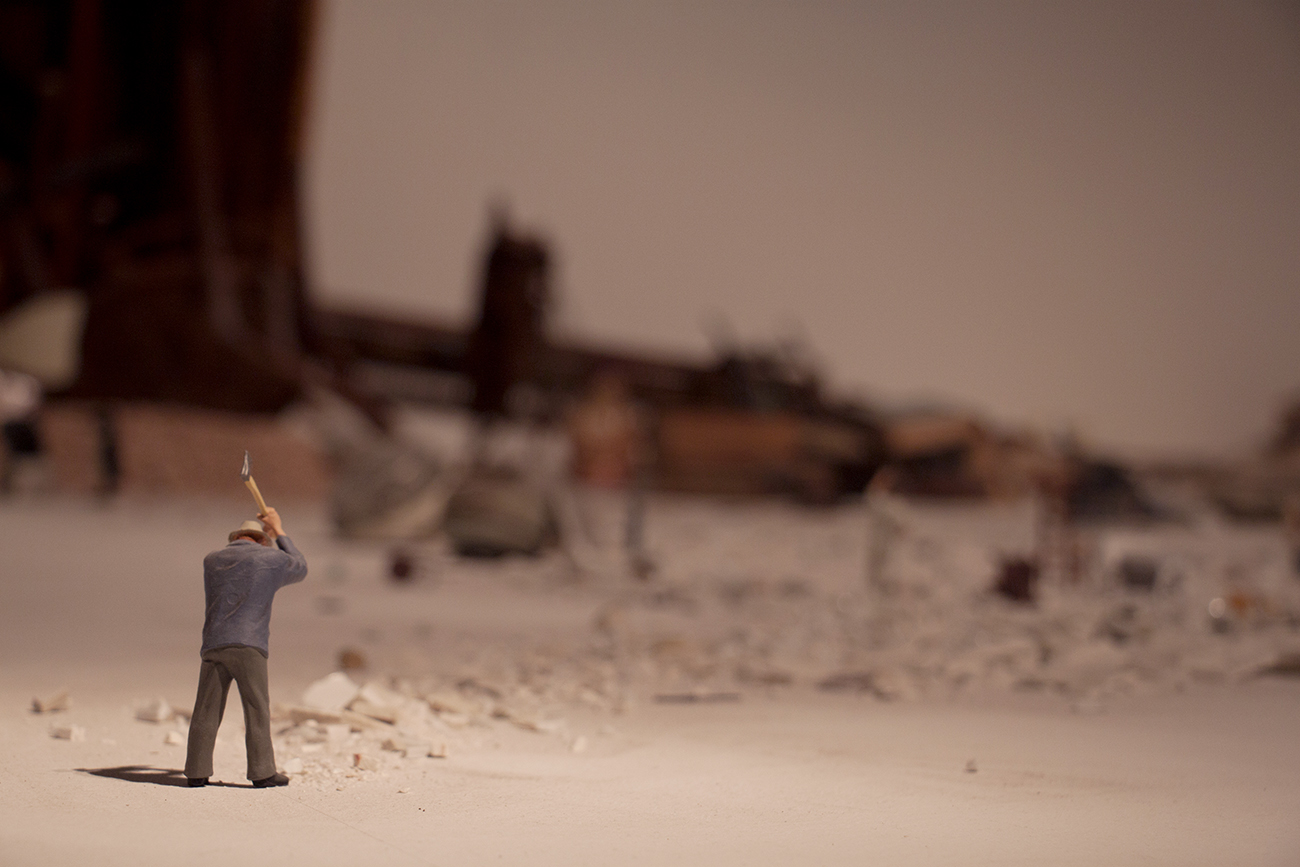
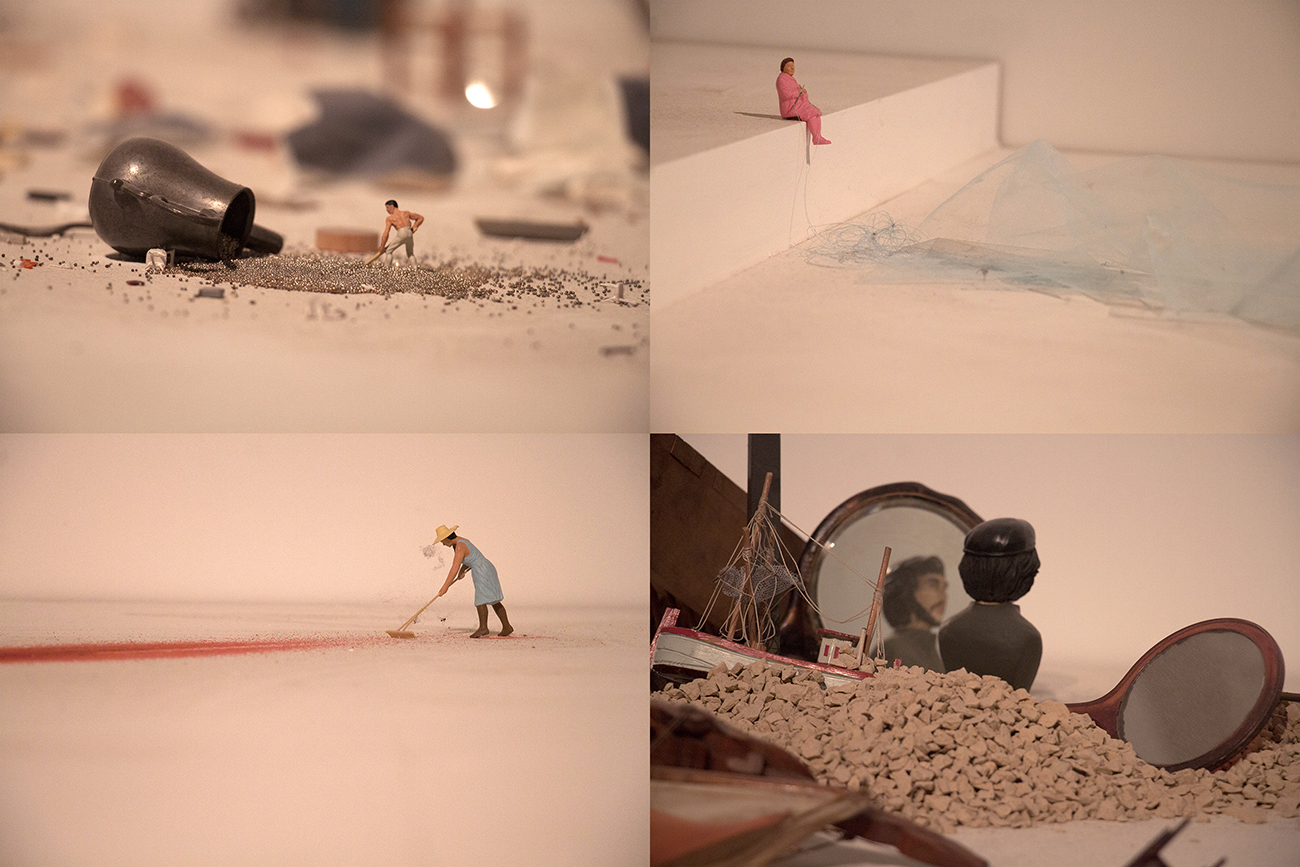
Liliana Porter – El hombre con el hacha y otras situaciones breves, Venecia (2017)
The insignificant figure of a man with an axe is the origin of an immense wreckage, shattered objects defy spatio-temporal relations and play with our perception of reality. This butterfly effect is a metaphor of time past and the memories fixed in our mind.
Participating countries
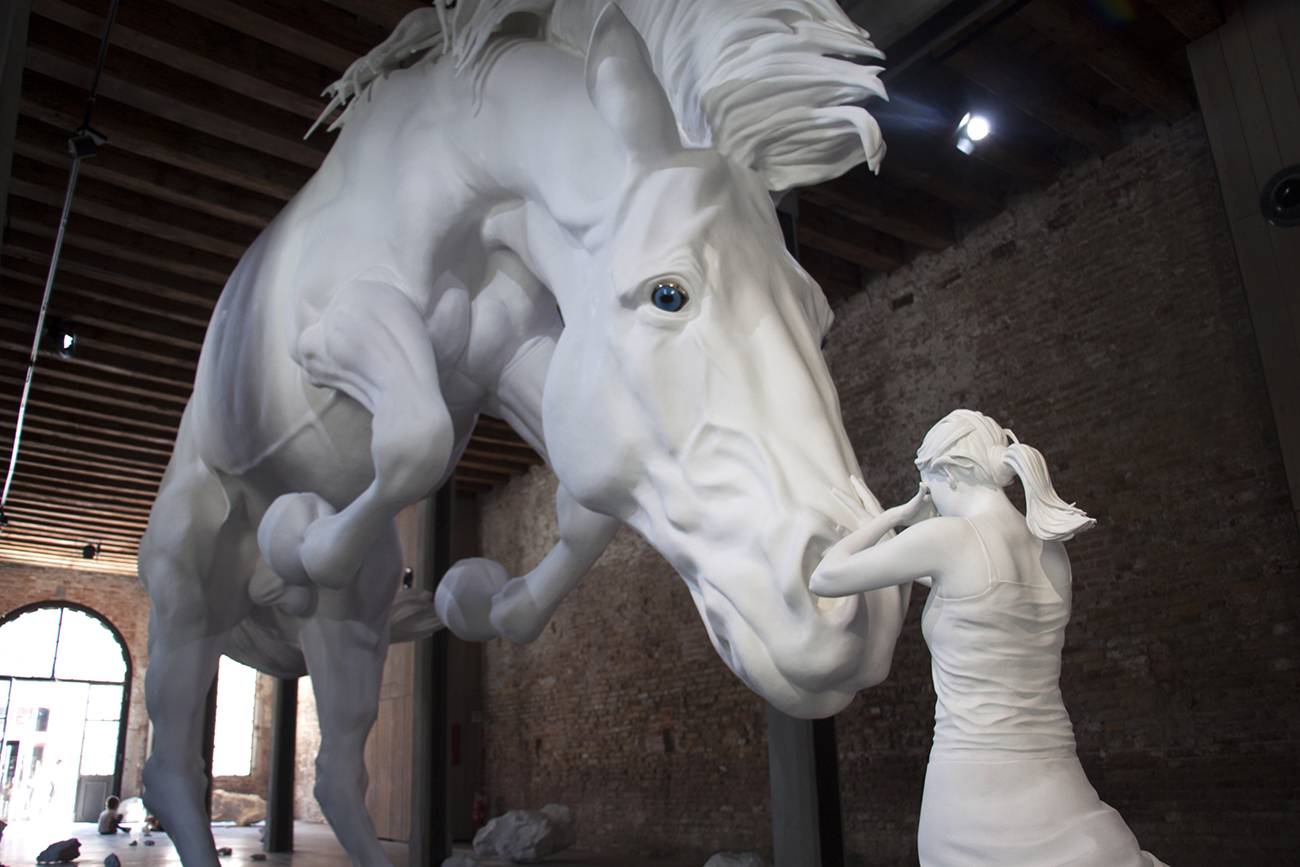
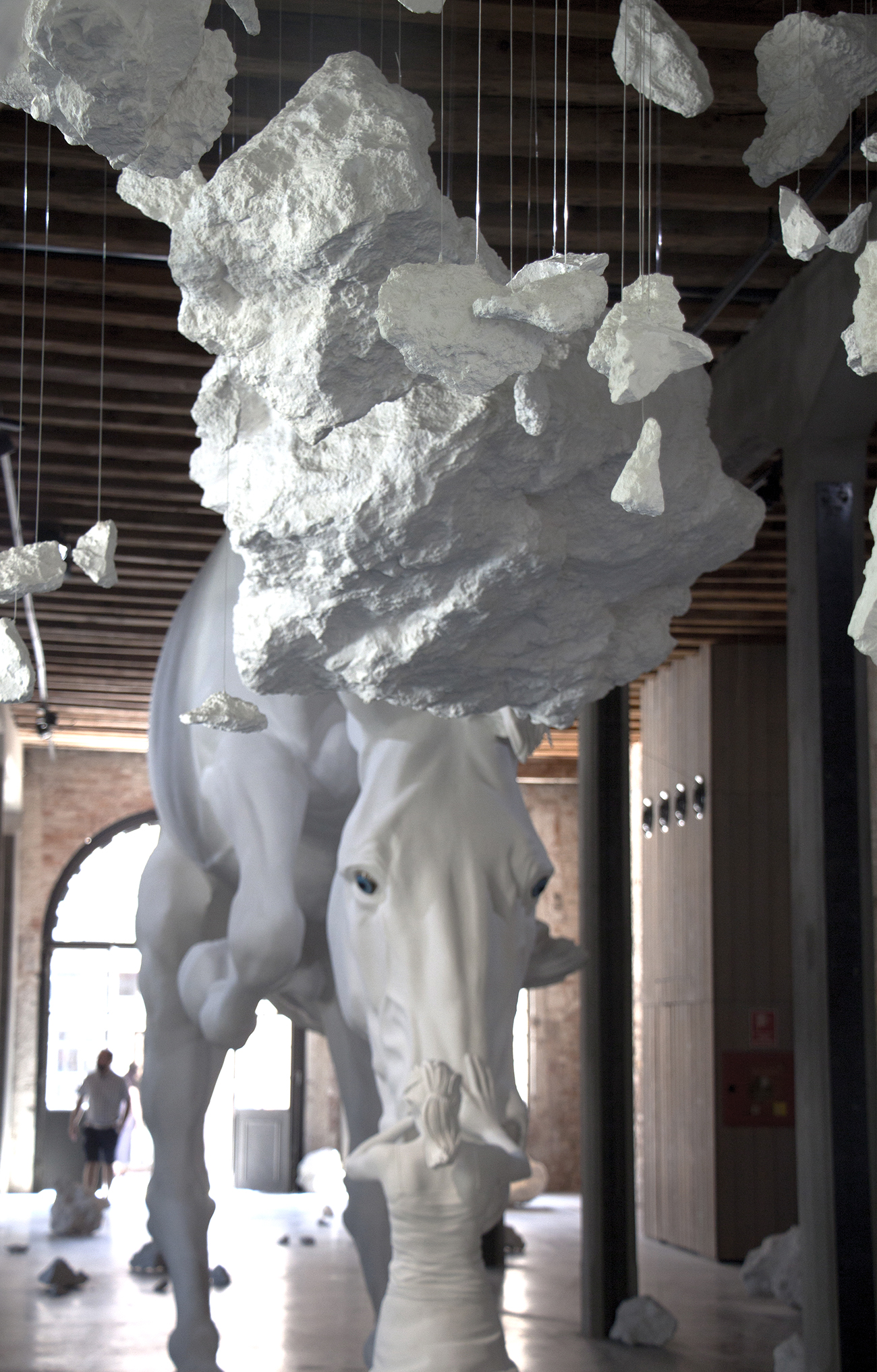
Pavilion of Argentina | Claudia Fontes – The Horse Problem
This gigantic sculptural installation refers to the relationship between man an horse, used in this case to exemplify the foundation of nations. In this human-made building, the captive horse points out the problem of harassed nature.
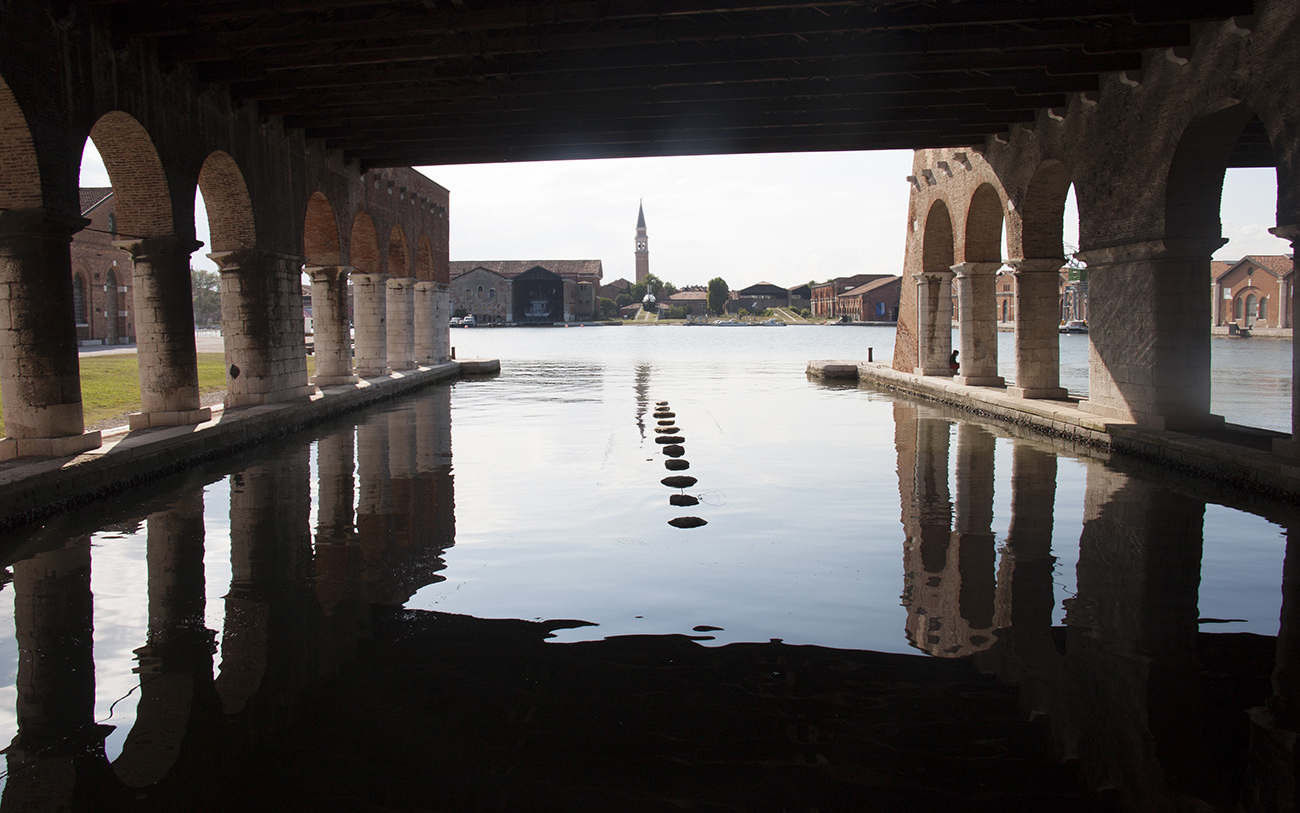
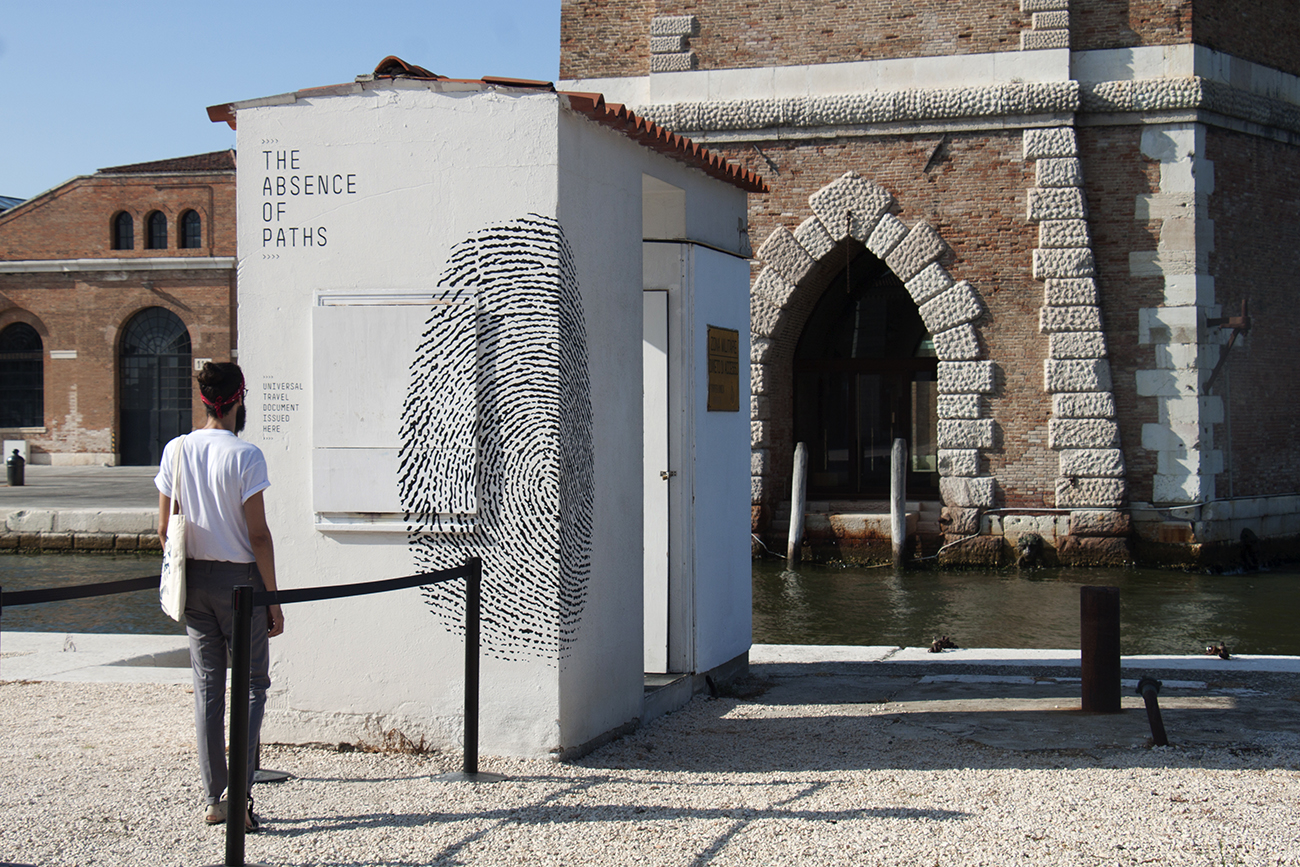
Pavilion of Tunisia
After 50 years without representation in La Biennale Arte in Venice, Tunisia presents the project called The Absence of Paths. The installation consists of three kiosks issuing universal passports (FREESA) to all citizens of the world, who wish borders were mere geographical symbols. This clearly puts on the spot the migration crisis thousands of people are experiencing in this ‘supposedly’ globalized world.
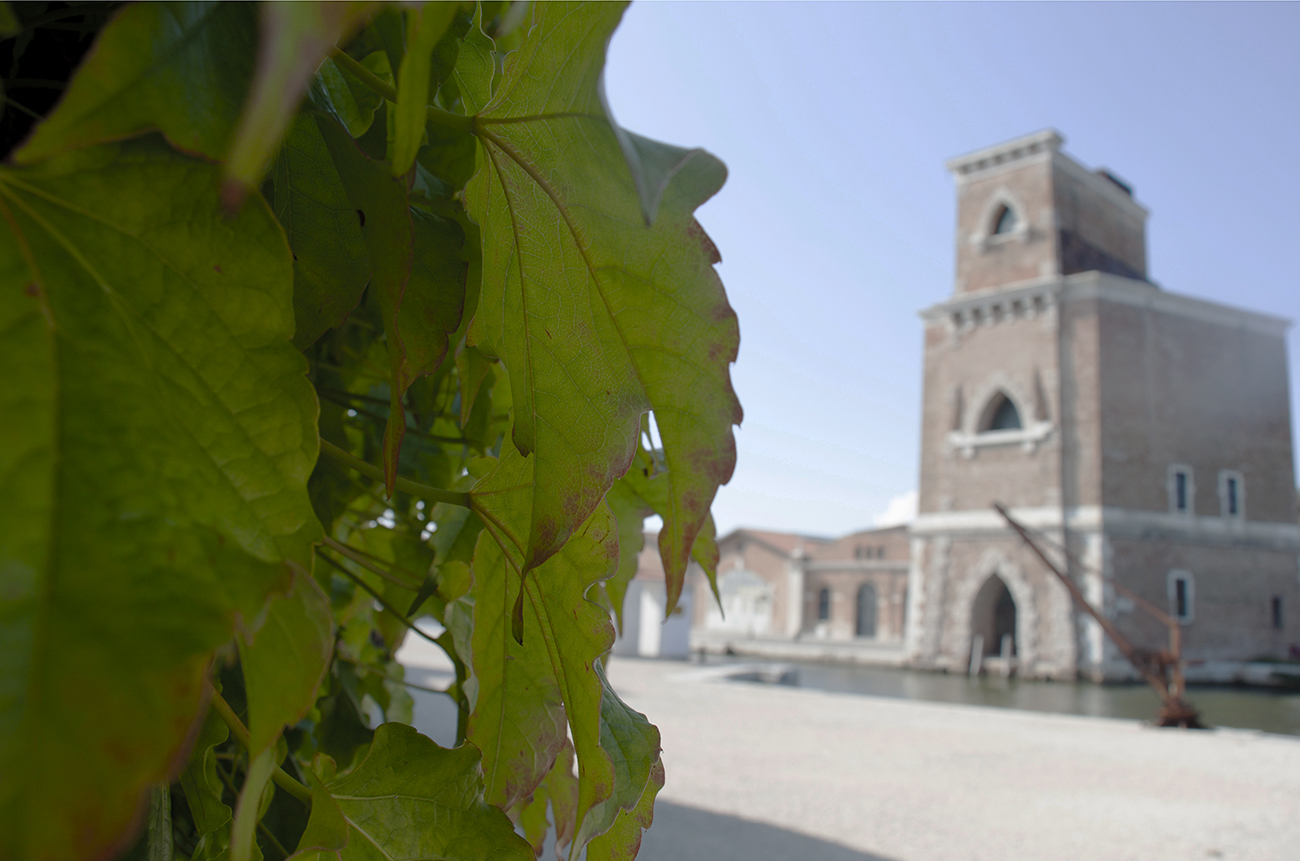
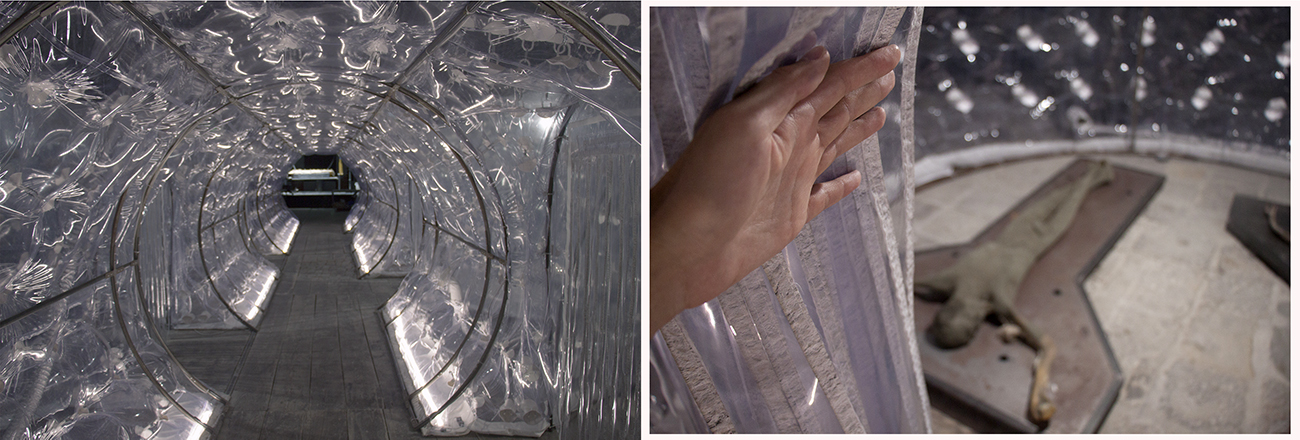
Pavilion of Italy | Roberto Cuoghi – Imitazione di Cristo (2017)
The Italian installation consists of a workshop producing sculptures imitating Christ from start to finish. The production never stops, meaning that through the course of the exhibition the casts are composed and decomposed, death and regeneration are objectified in this metaphor of ‘technological materialism’.
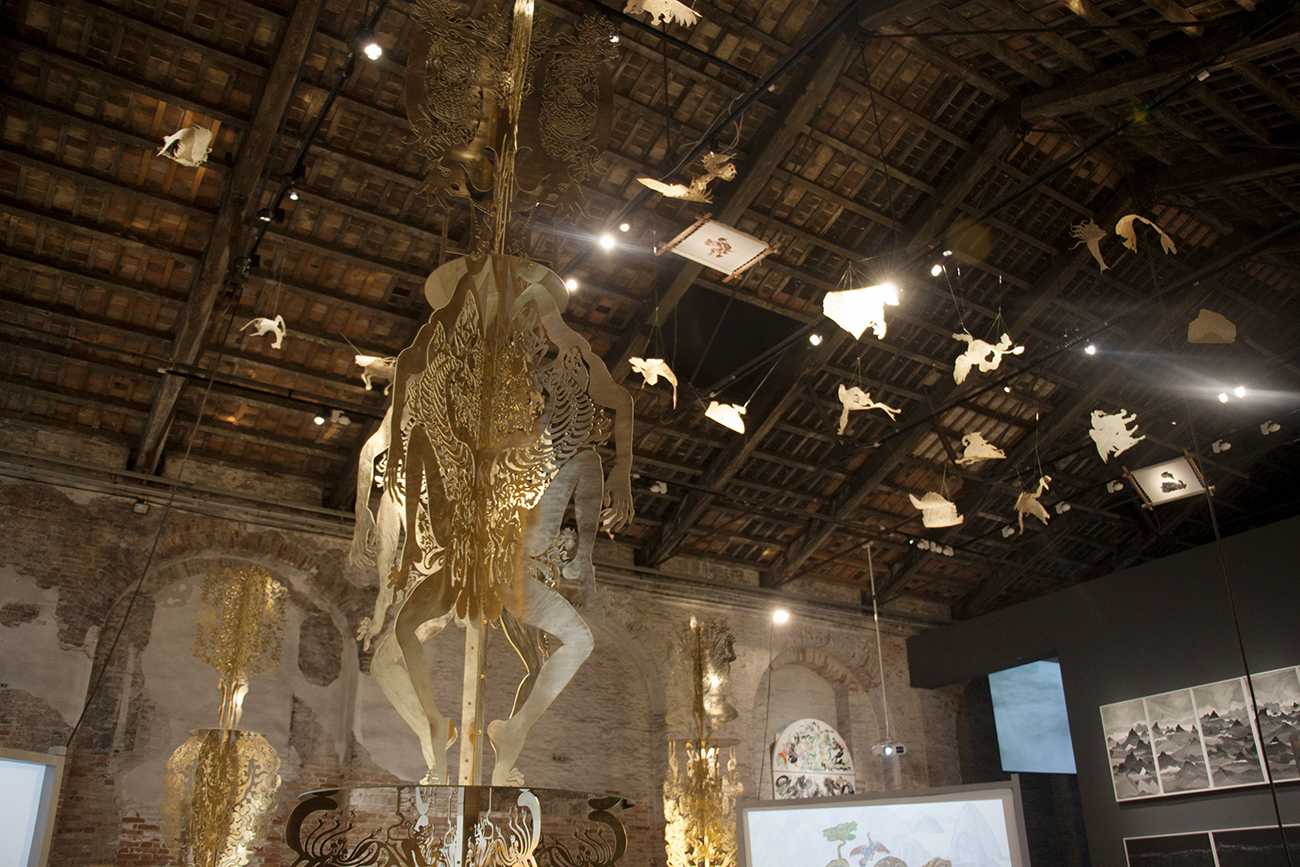
Pavilion of People’s Republic of China
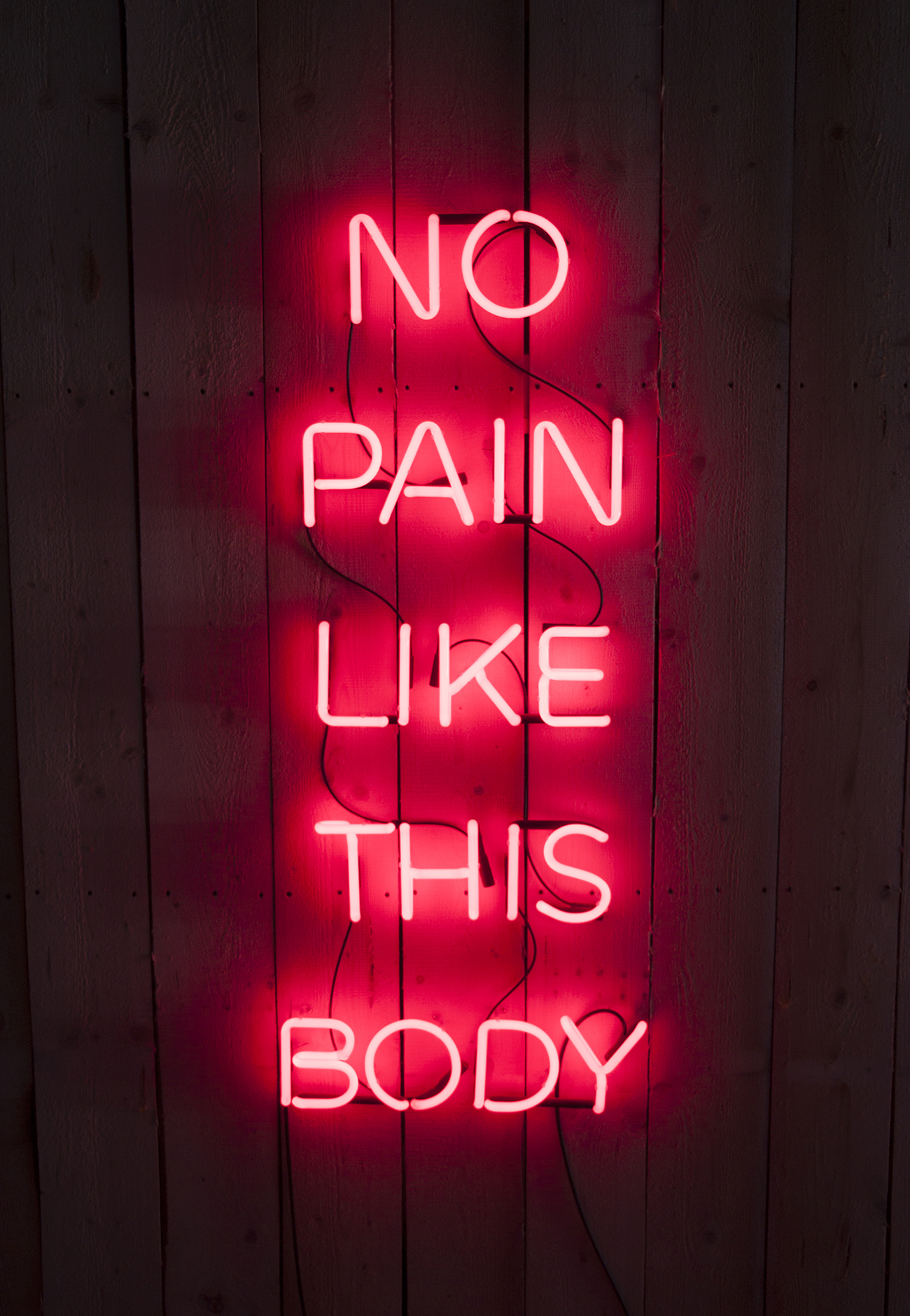
Pavilion of Philippines | Lani Maestro – No Pain Like This Body
Cover photo: ‘The Play‘ – a performance group founded in 1967 in Japan, based in Kansai region. Click here to view the full performance at this years Biennale Arte in Venice.
Photography by When Audrey Met Darcy
